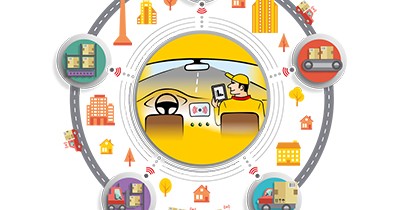Self-Driving Vehicles will change Logistics
Self-driving vehicles are set to change logistics, according to a new report by DHL titled “Self-Driving Vehicles in Logistics.” The report highlights key elements and potential of autonomous technologies.
The report contains various best-practice applications from different industries and also examines concrete use cases of self-driving vehicles across the entire logistics value chain.
Applications for self-driving vehicles that are discussed in the report include:
–Autonomous transport and assisted picking in warehouses
–Autonomous outdoor logistics like yard, harbor and airport operations
–Assisted highway trucking and convoying in line-haul transportation
–Last-mile delivery
Warehouses and distribution centers have been using self-driving vehicles to some extent for years, but DHL predicts that making driving in logistics more and more autonomous will change the logistics sector dramatically.
Moving to public roads is the next evolutionary step, and the logistics industry is in a prime position to further shape the future of self-driving vehicles.
Wide range of benefits
Self-driving vehicles can provide a wide range of crucial benefits including improved road safety, greater fuel efficiency and reduced environmental impact.
However, as the DHLreport explains, autonomous technologies still have some way to go before reaching full maturity. Considerable catching up is also required regarding regulations, public acceptance, and issues of liability. Despite these barriers, some compelling use cases have already emerged, clearly indicating that many organizations are willing to develop and deploy self-driving technologies.
For public highways and urban streets, DHL anticipates:
–In the near future, enhancements to existing driver-assistance functions.
–Next, the introduction of autonomous driving in specific situations such as on congested highways.
–Further into the future, fully autonomous truck convoys on highways, 24/7.
Read the complete report here.





